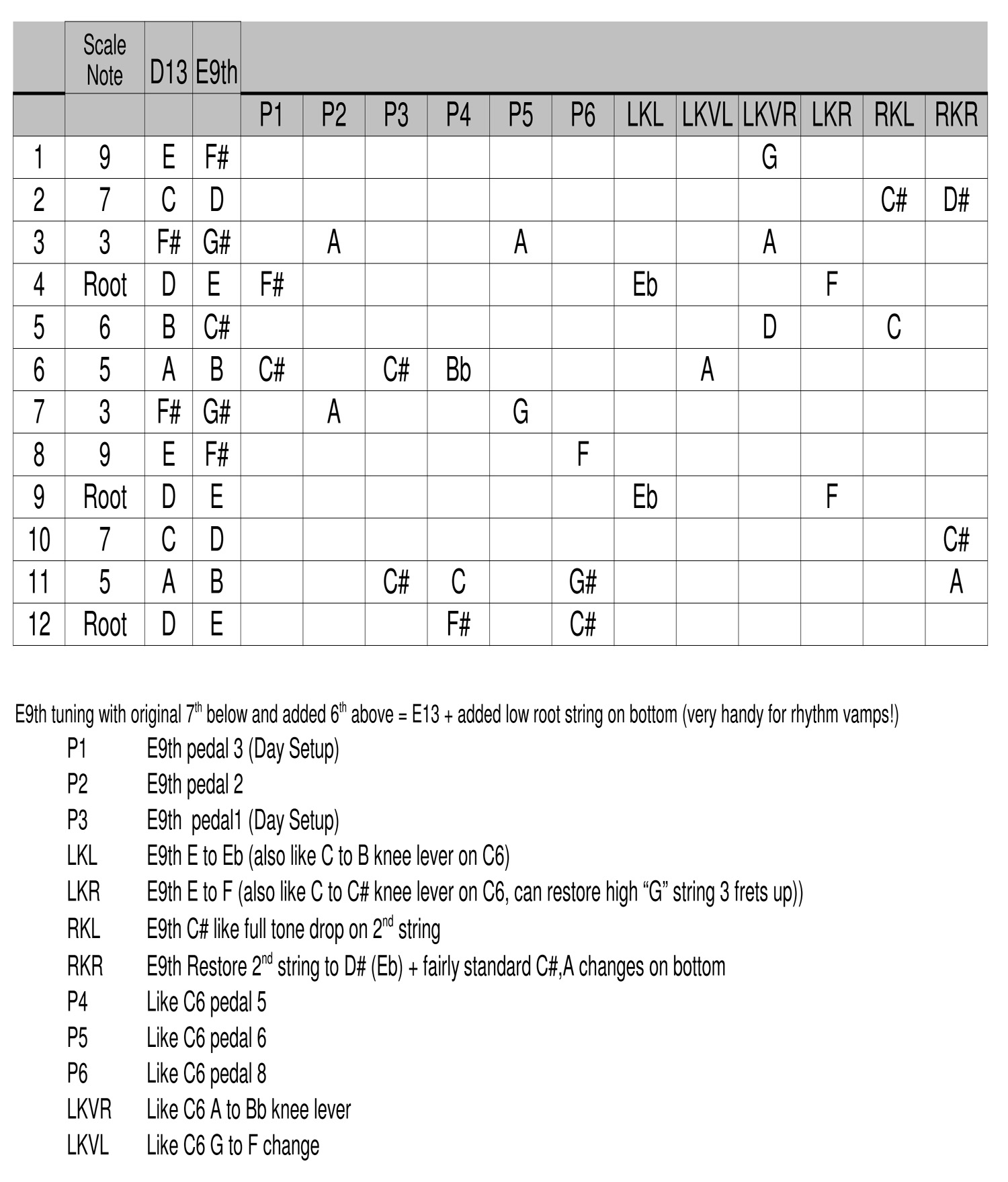Update: 08/03/2021
This is the latest edit to my tuning. After looking at all the variations this is the most logical and musical to me. I hope a young steel player will pick this up and carry it forward. If I had done this 30 years ago no telling where it would be today. But that was when everyone told me I couldn't do my own thing. This tuning could and should be the future of pedal steel.
Note:
*Ds to Es splits with Ds to Db, LKR & RKL.
*7th string F# LKLI splits with P1
*11th string P4 tunes to Ab with RKR engaged
*8th string E should have a compensator on P2.
Tunable splits are a must for this tuning.





